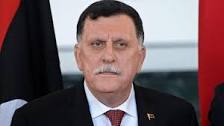
Libya

Brief Overview
Libya returned to a state of civil war in April 2019, when an armed offensive to capture Tripoli led to the UN’s postponement of a national conference on Libya’s future. This relapse into war has limited economic activity and exacerbated the hardships faced by the population. Continuing political uncertainty makes economic stabilization, let alone recovery, unlikely. Growth remains subdued amid disinflation. Expenditure rigidity is keeping budget deficits high, even though repressed imports contribute to current account surpluses, easing pressure on foreign reserves.
Despite this context of insecurity, Libya has managed to produce an average of 1 million barrels of oil per day, with this the predicted average through to the end of 2019. But, given the ongoing conflict, and the rigidity in compressing budgetary expenditures, GDP growth will be negative in 2020 (minus 0.6 percent), stabilizing at about 1.4 percent over 2021–22.
Disinflation is expected to persist (minus 2.8 percent on average) as parallel market rates converge further toward the official exchange rate. Budget deficits will remain high, averaging 10 percent of GDP and, though the Central Bank of Libya is expected to continue rationing imports, current account surpluses will steadily decline from about 7.3 percent of GDP in 2020 to 1.4 percent in 2022. Consequently, reserves will stabilize at about US$91 billion for 2020–22.
Political resolution is needed to implement the reforms required for private sector- driven growth and the generation of new jobs—the country’s only path toward sustainable, shared prosperity.
Libya Public Finance
Public finances are expected to improve slightly but the inflexibility of current expenditures, coupled with the volatility of oil revenues, keep the country’s overall fiscal stance under severe stress. Although oil revenues were expected to improve this year (to 47 percent of GDP), they will barely cover the high—and increasing—wage bill, which will hit 48 percent of GDP.
The rising wage bill reflects salary increases and additional hiring linked to pressure placed on the use of the public payroll as a tool for stabilization during a period of multi-factional conflict. Concerns over using the payroll for militias has prompted calls for an audit of the two Central Banks. At the UN’s request, the World Bank has commented on the Terms of Reference for the audit and has also submitted comments on the new economic reforms proposed below.
Given the complex political economy, public subsidies are likely to remain high (10.6 percent of GDP) and, while slightly improving, the budget deficit has remained high—at about 26 percent of GDP in 2018, down from 34.5 percent of GDP in 2017. The deficit is expected to be financed through cash advances from the Tripoli Central Bank and the issuance of government bonds in the east of Libya.
The deficit in balance of payments reflects both the large public sector deficit and the economy’s heavy reliance on imported consumer and intermediate goods, including refined fuel. These transformed the small current account surplus of 2.5 percent of GDP registered in 2017 into a deficit of about 3 percent of GDP in 2018.
Foreign reserves will stabilize if selected foreign investment in the oil sector and oil prices cover most of the current account deficit, allowing the Central Bank to stave off a further drain on reserves. With respect to fiscal planning, immediate challenges include how to manage pressures on fiscal spending while restoring and improving basic public services.
A longer-term goal is to help develop institutions to sustain a more diversified market-based economy. The World Bank’s engagement strategy included encouraging the growth of a more vibrant and competitive economy in which the private sector could create jobs and sustainable wealth. The strategy also includes transforming the way oil revenues are managed to ensure they are used to everyone’s equal benefit. This could help give Libyans more of voice in defining their communities’ interests.

State of Libya
Capital: Tripoli
Population: 6.4 million
Area 1.77 million sq km (685,524 sq miles)
Major language: Arabic
Major religion: Islam
Life expectancy: 69 years (men), 75 years (women)
Currency: Libyan dinar
UN, World Bank

Physical Contacts of the Presidency
Name of Minister:
Address:
Telephone:
Fax:
Physical Contacts of the Prime Minister’s Office
Name of Minister:
Address:
Telephone:
Fax:
Physical Contacts of the National Assembly
Name of Speaker of the House:
Address:
Telephone:
Fax:
Physical Contacts of the Chief Of State and Cabinet Ministers
Name of Minister:
Address:
Telephone:
Fax:
Physical Contacts of the Ministry of Interior
Name of Minister:
Address:
Telephone:
Fax
Physical Contacts of the Ministry of Justice
Name of Minister:
Address:
Telephone:
Fax:
Physical Contacts of the Ministry of Foreign Affairs
Name of Minister:
Address:
Telephone:
Fax:
Physical Contacts of the Ministry of Women’s Affairs
Name of Minister:
Address:
Telephone:
Fax:
Physical Contacts of the National Human Rights Commission
Name of Minister:
Address:
Telephone:
Fax:
Physical Contacts of the Police
Name of Inspector General:
Address:
Telephone:
Fax:
Physical Contacts of the Military
Name of Inspector General:
Address:
Telephone:
Fax:
Important Information of Key Human Rights Issues in Libya
Number Prisons in Libya
Number Prisoners in Libya:
Secret Detention Centres:
Police Stations in Libya
What are the current and ongoing human rights issues in Libya?
(1) Freedom of the Press
(2) Human Rights Defenders Issues
(3) Impunity
African Union (AU)
Joined the OAU in 1987
Signed the Constitutive Act of The African Union on:
Ratified:Instrument Deposited:
Signed:
Ratified:
Instrument Deposited:
Signed:
Ratified:
Instrument Deposited:
Signed: –
Ratified: –
Instrument Deposited: –
4.Protocol on Amendments to the Protocol on the Statute of the African Court of Justice and Human Rights
Signed: –
Ratified: –
Instrument Deposited: –
Signed: –
Ratified: –
Instrument Deposited: –
Signed: –
Ratified: –
Instrument Deposited: –
Signed: –
Ratified: –
Instrument Deposited: –
Signed: –
Ratified: –
Instrument Deposited: –
Signed: –
Ratified: –
Instrument Deposited: –
Signed: –
Ratified: –
Instrument Deposited: –
Signed: –
Ratified: –
Instrument Deposited: –
Signed: –
Ratified: –
Instrument Deposited: –
Signed: –
Ratified: –
Instrument Deposited: –
Signed: –
Ratified: –
Instrument Deposited: –